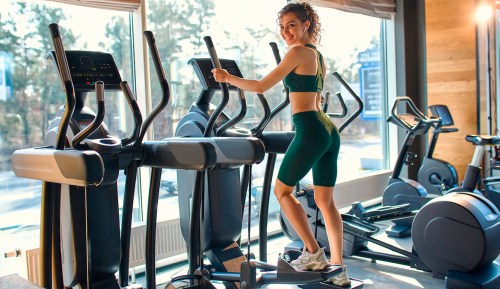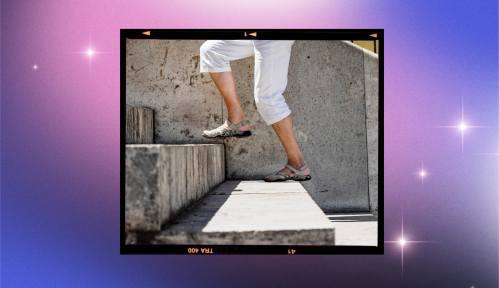Our editors independently select these products. Making a purchase through our links may earn Well+Good a commission
These 5 Simple Moves Can Improve Your Coordination
Coordination makes daily life easier. Use these coordination exercises to prove to Beyoncé (and yourself) that you have some.

Coordination, the ability to execute complex, controlled body movements smoothly and without excessive effort, is important for everyone—not just serious athletes or Beyoncé’s backup dancers. Why? Because it makes life easier. And coordination exercises can help.
Experts in This Article
physical therapist at Hospital for Special Surgery in New York City, specializing in sports and orthopedic manual therapy
“If you have good coordination, you’re more likely to perform day-to-day tasks more safely and efficiently,” says Molly Frankinburger, DPT, CSCS. “We often think of coordination as just being about sports, like being able to throw or hit a ball.” But according to Dr. Frankinburger, there’s a lot more to it.
What are the types of coordination we need in daily life?
When it comes to coordination, there are three main types: hand-eye skills (using the visual system to control movements), fine motor skills (small hand movements like writing and pointing), and gross motor skills (using large muscle groups to walk, sit, stand, etc.). Good coordination means you have the ability to execute smooth, accurate, controlled actions on all three levels with agility and precision. This involves appropriate speed, timing, and direction of targeted muscle actions, according to Dr. Frankinburger. So “being well coordinated” is all about adjusting your movements based on feedback from multiple body systems, such as vision and proprioception (knowing where you are in space).
Dr. Frankinburger points out that many activities of daily living (ADLs) are far more complex, biomechanically speaking, than you may assume. Even something as mundane as washing dishes is a multifaceted maneuver for your brain and body to execute: You stand at the sink, hold a dish in one hand, while scrubbing in circles with the other.
“Most of our daily movements involve more than one joint or body region, and are inherently variable, based on feedback from our nervous system and musculoskeletal system,” she says, referring to the framework for your muscles made up of your bones and connective tissue.
What can you do if you have poor coordination?
Think of coordination as your body’s very own symphony orchestra. “Our bodies and brains are constantly accepting feedback from multiple systems to produce what looks like one unified movement,” Dr. Frankinburger says, “just like the different sections of an orchestra come together under the conductor to produce beautiful music.” One of the best ways to fine-tune your personal symphony (as in your body) is by practicing dedicated coordination exercises
“Our bodies and brains are constantly accepting feedback from multiple systems to produce what looks like one unified movement.” —Molly Frankinburger, DPT
But when you’re working on coordination, it’s not the time to just phone in a workout and do the moves any old way. “For coordination exercises, you’ll want to focus on the repetition and speed of the movement,” advises Dr. Frankinburger. “Slowly increase the speed of the motion until you can perform it smoothly and precisely.”
If you find coordination exercises challenging, you can break them down into pieces—practicing the arms first, then adding in the legs, for instance—before trying to coordinate the complex movement as a whole.
5 coordination exercises that can improve your body control
How can you improve your coordination skills? Aim to do 30 to 50 reps of each of these exercises three to four times per week for a solid coordination workout at home. Repetition is a key component of building the brain-body connection that good coordination requires.
1. Jumping rope
“This is an easy one to do at home, even if you don’t have a rope,” Dr. Frankinburger says. “Just coordinating the motion of your hands with hopping makes for a good coordination exercise.”
Proper form: According to connected jump rope company Crossrope, you’ll want to keep your hops to just one to two inches off the ground—don’t tuck your knees, and keep your toes pointed slightly downward. Make sure to keep a slight bend in your knees the entire time so you can land softly and keep things easy on your joints.
How it helps: You’re combining fine motor skills (the motion of your hands turning the rope) with gross motor skills (the jumping).
2. Bird dog
To do a bird dog, start on all fours with your wrists under your shoulders and knees under hips. Lift your right arm and left leg off the floor at the same time, extending both to straight and reaching your fingertips as far from your toes as possible. Lower both limbs back down and switch sides. That’s one rep.
Proper form: Keep your back straight—hyperextending with an arch as you reach your arms and legs out could put too much stress on your lumbar spine. Also keep your shoulders down and away from your ears to avoid neck compression.
How it helps: “This alternating motion is a lot like the coordination required for a standing alternating arm and leg extension,” says Dr. Frankinburger. “You’re building core stability and capacity for distal movement.” Meaning, you’ll better be able to perform large movements that require you to move limbs away from the center of your body, like unloading the dish washer.
3. Standing march
Start standing with your feet under your hips. Lift your right knee up so your thigh is parallel with the floor and hold for a breath. Then, lower it back down and switch sides. That’s one rep.
Proper form: Keep your hips level as you bring up each knee, and spread the weight evenly throughout the foot that remains on the ground.
How it helps: “Balance is correlated with coordination,” Dr. Frankinburger says. “They’re two separate things, but there’s overlap between the two. Here, you’re coordinating your motion using hip flexion and core stability, on alternating legs.”
4. Overhead squat
Stand with your feet shoulder-width apart, and extend your arms up overhead. While keeping your torso upright, sit back into your glutes and bend both knees deeply, lowering your seat toward the floor. Make sure your butt doesn’t go lower than your knees.
Proper form: Don’t let your knees knock together as you bend down—they should remain parallel the whole time.
How it helps: Much like the standing march, you’re coordinating whole-body movement using hip flexion (bending) and core stability while also lifting your arms overhead. Bonus: If a particular part of this motion feels especially hard, it could be a sign of where you need to work on your fitness—many trainers use overhead squats to assess clients regularly.
5. Walking lunge
Start standing with feet under hips. Take a big step forward with your right leg, then bend deeply through both knees, coming into your lunge. Press down through your front heel and push off your back foot to stand up and step your left leg forward to meet the right. Now repeat with the left leg. That’s one rep. Continue alternating, and turn around if you run out of room.
Proper form: As in the overhead squat, make sure your knees track in line with your second and third toes and don’t collapse inward.
How it helps: “This requires balance, stability, and the coordination of the trunk,” says Dr. Frankinburger.
Keep in mind
Coordination is an essential part of performing everyday movements with ease and avoiding injury. Of course, these coordination exercise examples are just five of many that can help you build better body control. Many primal movements and compound exercises that work more than one body part at once could help you if you’re looking into how to improve coordination. (Even walking backwards—safely—could give you a prime body-brain challenge.) Work them into your routine regularly, and watch your coordination get better. You may never join Beyoncé’s back-up crew, but daily life will feel easier—we promise.
Sign Up for Our Daily Newsletter
Get all the latest in wellness, trends, food, fitness, beauty, and more delivered right to your inbox.
Got it, you've been added to our email list.










